Glasgow lives in the shadow of its royal, history-ladened neighbor, Edinburgh (post Edinburgh II). However, we liked Glasgow better, for several reasons:
- Glasgow is a “real”city – it’s not a big tourist destination, so you won’t find costumed sales folk hawking tours, and souvenir shops on every corner.
- the architecture is fascinating – Victorian, playful facades, visionary Art Nouveau, and modern riffs off the latter.
- There’s a lot of the incredible art and architecture of Charles Rennie Mackintosh and his less-well-known wife, Margaret MacDonald.
- And the museums aren’t bad either!
Let’s begin with some pictures of the streets and buildings of this interesting city. Glasgow is a port city; in its heyday (1800’s) it was a wealthy industrial powerhouse and Europe’s 6th biggest city. Going into the 1900’s, while the rest of the UK was enthralled with Victorianism, working-class Glasgow veered into the modern, incorporating aspects of Minimalism, Art Nouveau, and even some Asian influence. Today it’s an intriguing city that doesn’t take itself too seriously. For example, look at the neoclassical Glasgow Gallery of Modern Art in the first picture below, with its Grecian columns; notice that the
equestrian statue (far left) sports a guy wearing an orange road hazard cone, and that the building’s mirrored mosaic is anything but neoclassical! Or how about this building with the funky ironwork, from Glasgow’s days of iron forges? Here, Glaswegians call sanded and polished concrete “Glasgow marble”. There’s a lot of quirk and fun here. More of the city is shown below. OK, “more” is a lot of pictures, but then again the city is fascinating!
Even better, most of these buildings are covered with very artsy detail. It pays to look up as you walk – a bit hazardous, but worth it; as shown below, the building facades are full of sculptures and friezes.
The people have fun too – one often encounters parties, sometimes bizarre, going on.
Not to mention, of course, the pervasive and wonderful Scotch bars!
It’s time for a little (a very little) art history. In the late 1800’s a backlash against industrialization led to the “Arts and Crafts” movement, featuring hand-made objects with simple designs from nature. With the new century approaching there was a creative energy for new styles for the new age. In painting, one expression of new style was Impressionism. In the design world the new style was “Art Nouveau”, which extended the Arts and Crafts emphasis on nature, incorporating female figures and embracing modern manufacturing technologies to create flowing, linear, and abstract forms.
In Glasgow during this time, the Glasgow School of Art became one of the most successful art schools in the UK, with one of its students, Charles Rennie Mackintosh, winning many awards. Staff and students developed their own approach to Art Nouveau, known as the “Glasgow Style”, that incorporated stylized, linear motifs based on nature. A decade after Mackintosh graduated he was given a commission to build a new home for the Glasgow School of Art, with the freedom to design every detail. It’s a pinnacle of artistic and architectural achievement. A model is shown in the first picture below; well, I was
underwhelmed at first look, but this is a 1909 building, remember, and much here is actually new for the times. The over-riding theme is ‘letting in the light’. As you can see in the picture on the right, there are protruding iron arms at the base of the multi-paned windows with stylized roses at their ends (a Mackintosh trademark). The arms were a new invention that reinforced those very large, fragile glass windows and allowed natural light to pour into the studios. Throughout the building the lines are Modernist, with Asian
influences and Art Nouveau flourishes; examples shown above. Alas, it’s a working school, without free access; the pictures above are pictures of pictures. I can, however, show you tea rooms that Mackintosh designed.
When in 1875 a tea dealer placed table and chair in his shop and sold cups of freshly brewed tea, the tea room was born. The idea quickly caught on. Many city-center buildings were converted to tea rooms for meeting, relaxing and doing business – and they were a much better option than a bar for unescorted women. The face of Glasgow tea rooms was Miss Cranston, who owned 4 of the largest; she favored modern design and unique decoration. In 1896 Mackintosh was asked to design murals for one of her tea rooms, and his daring designs became a public talking point. From 1900 on he was the sole designer of every aspect of her tea rooms. 1900 also marked Charles Mackintosh’s marriage to Margaret Macdonald, another graduate of the Glasgow School of Art, and together they collaborated on interior designs and artwork. The pictures below are from
the “Ladies’ Luncheon Room” that Charles designed in 1900 (now in a museum); pay particular attention to the decorative panel that he did with Margaret (mostly Margaret’s style). I think it’s fascinating – made with oil-painted gesso plaster on burlap and scrim, twine, glass beads, thread, mother-of-pearl & tin leaf. There is more art that came from the tea room, of course; the related panel shown below, and beaten tin panels shown
just above. In “The Dew”, the first picture above, Margaret drew the women’s hair, clothes and plant forms as one continuous looped line, broken only by small cascading circles and droplets – the title’s “Dew”. Nice.
 Our final look at a Mackintosh tea room is “The Willow TeaRooms and Gift Shop”. These rooms are not in a museum – they constitute a 1903 Mackintosh building that is still serving food and tea to the public. Below are pictures of these rooms as they looked in 1905;
Our final look at a Mackintosh tea room is “The Willow TeaRooms and Gift Shop”. These rooms are not in a museum – they constitute a 1903 Mackintosh building that is still serving food and tea to the public. Below are pictures of these rooms as they looked in 1905;
and here is how those first two rooms above – the Front (ladies’) and Back (men’s) rooms – look today.
That last archival picture from 1905 (3rd picture, above) shows the “Room de Luxe” that overlooked the street below; it was the more extravagant and exclusive ladies’ room – a “fantasy for afternoon tea”. Below is how it looks today; the chairs are reproductions, but
the decoration is original. It really is exquisite – I don’t think I captured it so well – but it is missing at least one of its artistic highlights, one of Margaret Mackintosh’s more famous works, a gesso panel inspired by a sonnet (Rossetti’s O Ye, all ye that walk in Willow Wood). It’s currently in the Kelvingrove Art Gallery that we’ll visit in the next post, but I’ll include it here where it belongs. I think it’s gorgeous. The story of Willowwood
is as follows: A man sits by a well in Willowwood. As he looks into the green waters, his reflection changes into that of his dead beloved. As his beloved’s gray image fades, he scoops at the water with his hand to drink and grieves over his loss.
One last topic – the Tenement House. Urban working-class Glaswegians lived in tenements, multi-storied flats often consisting of just 2 rooms and a shared outhouse. It wasn’t until the mid-1800’s that landlords were finally required by law to supply water to the houses. The Tenement House was built in 1892 and was designed for the slightly better-off, with 4 rooms and the added luxury of its own toilet. In 1911 a Miss Townsend
and her mother moved in, and for 64 years she changed nothing. When Miss Townsend died, a relative came to collect a set of chairs from the will, and “felt like Pip on witnessing the room of Miss Havisham in Dickens’ Great Expectations“. Ultimately the National Trust of Scotland bought this otherwise ordinary row home as a time-warp display of life back then. Alas, photos were not allowed; these pictures come from their booklet.
Heating and cooking were done with coal, and the all-purpose kitchen shared laundry duties – notice the wringer on the sink in the first picture below. Clothes were
dried overhead in this, the warmest room. Ironing was done on the kitchen table using the flatirons heated on the range, as shown above. Larger laundry loads were washed in the communal wash house outside.
That’s enough for now, don’t you think? Next post: Glasgow II, Kelvingrove Art Gallery.































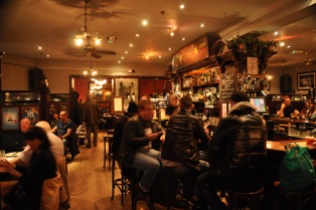


















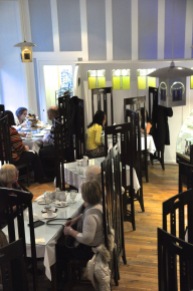















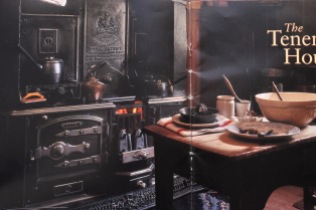
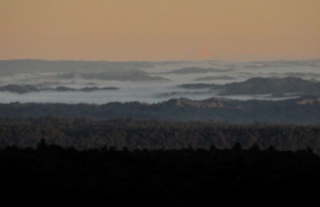














































































































































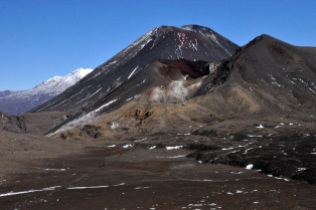










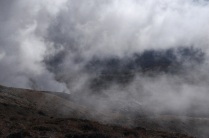








































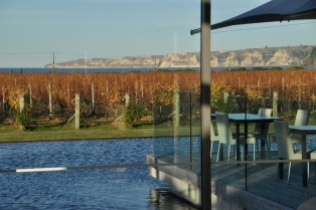

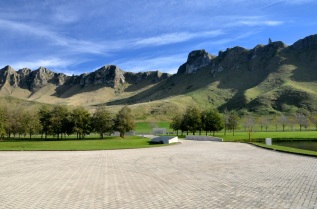












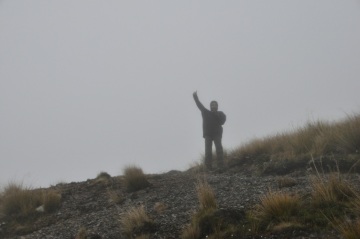





































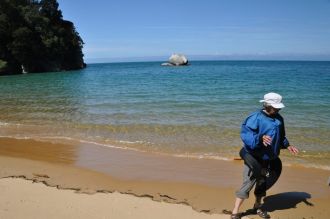






































































































































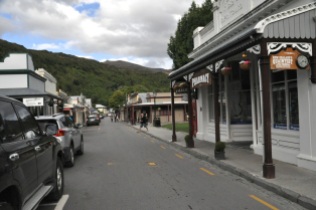











































































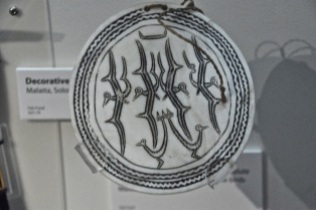



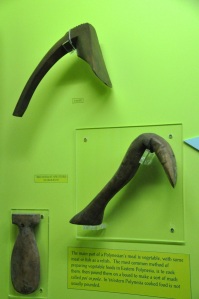

























































































































![Space [Carl Sagan] Robert Rauschenberg, American, 1994](https://trekinti.files.wordpress.com/2014/04/dsc_0091.jpg?w=324&resize=324%2C464&h=464#038;h=464)
![Music [John Cage] Robert Rauschenberg, American, 1994](https://trekinti.files.wordpress.com/2014/04/dsc_0093.jpg?w=308&resize=308%2C464&h=464#038;h=464)













